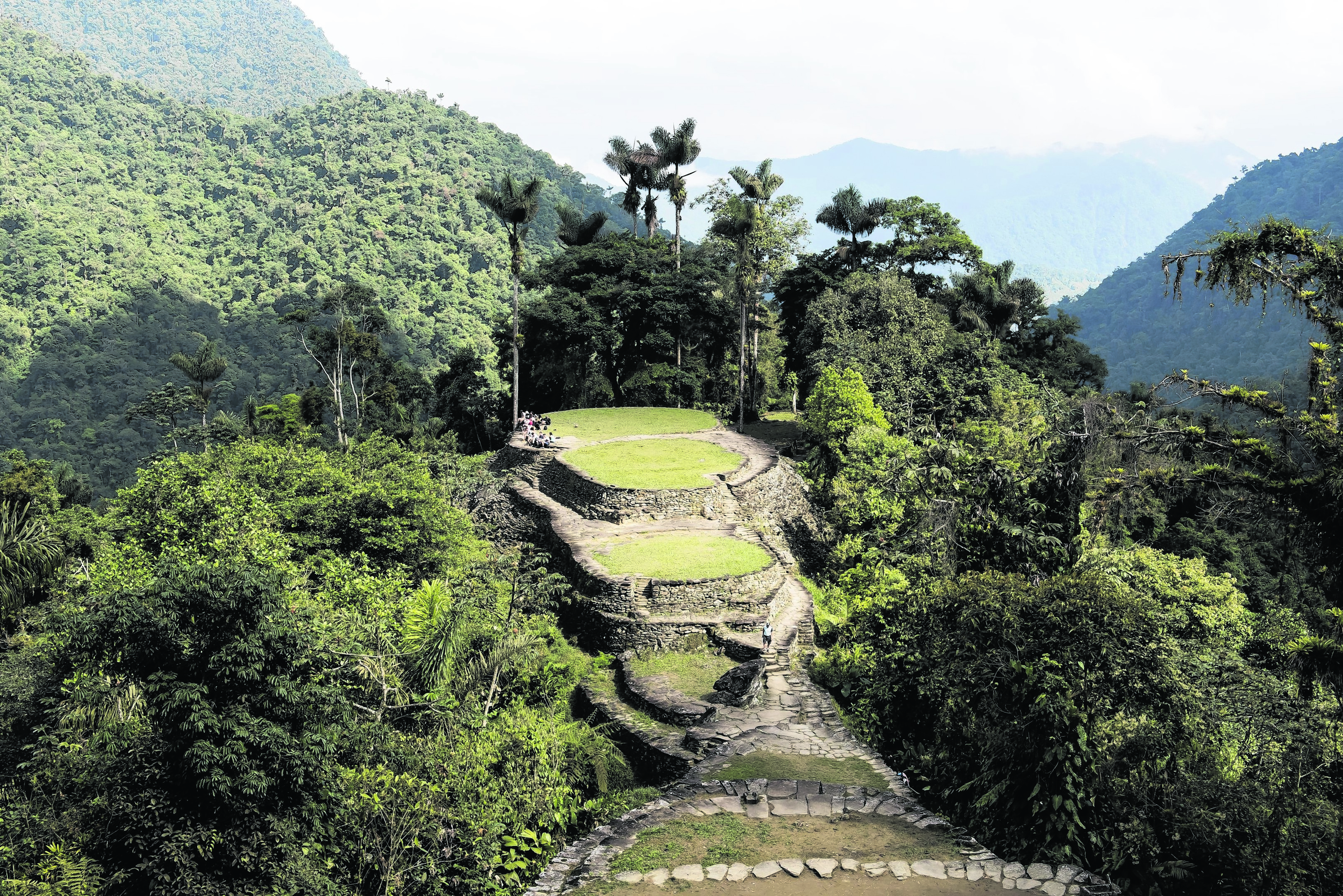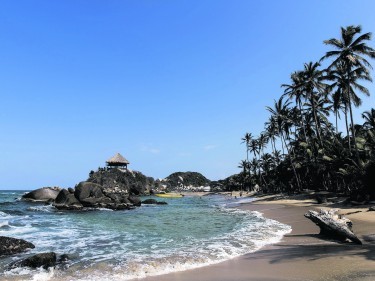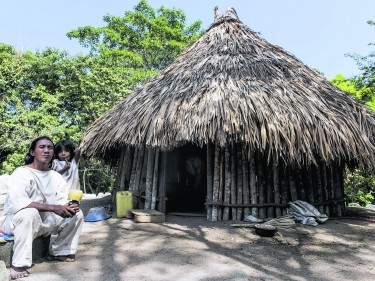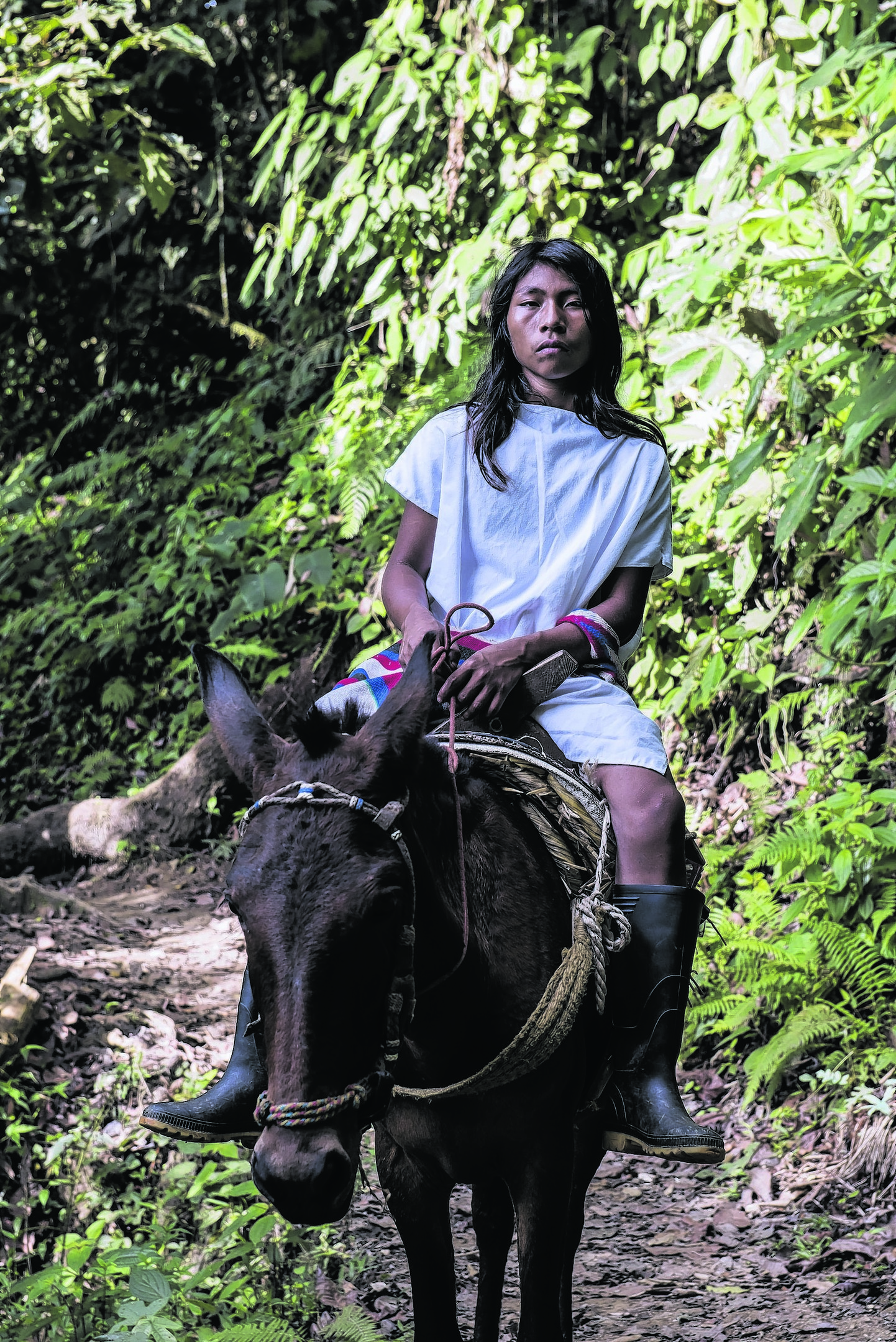Steep climbs, slippery river crossings and an indigenous tribe determined to save the environment. Sarah Marshall treks through Colombia’s Sierra Nevada to find the Ciudad Perdida
Fifty-eight, fifty-nine… at sixty, I wearily give up counting. There are now so many red weeping welts on my irritated limbs, it looks like the mosquitoes have been employing some sadistic form of pointillism.
Despite the clammy 35C degree January heat, I put on my trousers; the same sweaty, permanently damp pair I’ve been hiking in for the past two days.
But I shouldn’t be surprised; thick clouds of spindly-legged and vicious (but not malarial) insects are just one of the deterrents facing trekkers hoping to reach Colombia’s Ciudad Perdida (Lost City). After all, we are at the mercy of nature.
Founded in 800AD, 650 years earlier than Peru’s Machu Picchu, the mountaintop, forest-swathed citadel was abandoned by the ancient Tayrona civilisation in the 16th century when the Spanish conquistadors reached coastal city Santa Marta.
Rodrigo de Bastidas and his men never made it here, but the deserted settlement remained hidden for several centuries, until looters found a series of staircases in 1973 and dubbed the place “green hell”.
In 1976 the Colombian Institute of Anthropology and History stepped in, but it took several helicopter searches to relocate the overgrown ruins.
Many riches had already been plundered, although several gold pieces are now on public display at the excellent Santa Marta Gold Museum.
I base myself at the seaside Hotel Arhuaco in preparation for my trek, and find the exhibition of figures chewing cocoa leaves and masks used to transform wearers into bats a compelling introduction to ancient Tayrona culture.
Since the early Eighties, tourists have attempted the arduous but overwhelmingly spiritual 44km hike to Ciudad Perdida, although a kidnapping incident in 2003 put the site off limits to British travellers for several years. Now guerilla activity has subsided in Colombia, and while visitor figures are climbing, the enchanting trail is still far enough off the beaten track to appeal to adventurous travellers.
I’m already halfway through my journey into the Sierra Nevada mountain range, which rises 5,700m above the Caribbean coastline, but more leisurely hikers can choose to do the trip in six days.
Sweat pours from me as I haul myself – and seven kilos of camera kit – up never-ending inclines, dodging roots winding like trip wires around petrified tree trunks.
Yet I only need to stop for a few minutes and look around to understand why I’m doing this. With thin vines trailing from branches like angel hair and hummingbirds zipping across clear mountain streams, it truly is a pristine paradise.
At night, our group of six sleeps in hammocks strung up so close together that one accidental fart causes the line to ricochet like an Eighties executive toy.
Showers come in the form of cold water spurting from a sawn-off pipe, and dinners are cooked by head torch in enormous cauldrons.
I’ve allowed myself one change of clean clothes, and I save those (as a treat) to sleep in.
The campsites are maintained by the wiwas and kogis, indigenous tribes descended from the Tayrona civilization, who seem impervious to westernisation. We encounter several villagers along the trail, on horseback, washing clothes in the river, or carrying heavy bunches of plantain. They are shy, sensitive people, and for the most part appear startled and quickly scurry away.
Nearly 40 kogi families live in the Mutanzhi village, close to the trail, and receive money from the government for every tourist making the Lost City trek.
Dressed in white smocks and with the same jet-black shiny hair and square fringe, it’s hard to tell men and women apart. One clue is the poporo, a hollowed out gourd filled with crushed shells that no male seems to leave home without.
A thick yellow crust coats the rim, created by moistening a stick with spittle from chewing cocoa leaves and mixing it with the lime-based powder.
The bigger the rim, the more impressive his manhood. Some sentiments, it would seem, transcend all cultures.
Shamen Fermin declines my request to visit the visit the village – elders are busy asking spirits for permission to build a new house – but invites me to return another time… with at least two weeks written prior notice.
The kogis have a gentle disposition but I get the impression outsiders are merely tolerated. Every September, the park closes for two weeks for a purification ceremony and I imagine this is when the community is most at peace.
When we finally reach the uninhabited Lost City, after a final hamstring-straining 1,200 stone step climb, I can appreciate why, with 69 terraces carved into the mountainside, it was once an empire in the sky.
Only 30% of the original site has been uncovered, so don’t expect anything similar to the complexity of Machu Picchu, but the silence and seclusion is worth every blistering mosquito bite.
A few army officials are a reminder of the terrorist threat that once plagued these mountains, but with my legs dangling above plunging forest slopes, I imagine the ocelots, pumas, jaguars and 600 species of birds that have reclaimed this biosphere as their own.
We spend a couple of hours touring the site with our guide Jhonbanny, who communicates with a mixture of Spanish and wild gesticulation. He rattles through historical details, but is more animated when explaining kogi culture – particularly procreation.
“Sex indoors causes a clash of energy,” he tells us, immediately grabbing our attention. “So everything is done outside – and there’s no movement involved. Then any excess fluid is wrapped in cotton wool and buried, like planting a seed.”
A stunned and slightly awkward silence follows as women in our group giggle and men shuffle about uncomfortably.
The kogi people are deeply connected to nature and the development of tourism in their sacred homeland is a delicate matter. It’s more acutely obvious in Pueblito, an ancient village in Tayrona National Park, where I head to recover after the Lost City trek.
A 50-minute walk from the nearest car park, the Ecohabs Cabanas Arrecifes (a cluster of boutique tourist huts) is burried deep in the park at the foot of the mountains overlooking the Caribbean Sea.
Pelicans soar overhead as fierce waves extend their grip along shores largely unsuitable for swimming, but where smooth granite boulders and delicate palm fronds draw comparisons with the Seychelles.
It takes an hour and a half to reach Pueblito from El Cabo beach, scrambling up a rocky stairway where ropes tied to tree trunks can be used in tougher sections. (An easier although arguably no less ’treacherous’ trail runs through the neighbouring nudist beach.)
Manuel and his family make up half the village, which has dwindled in recent years, due largely to a lack of privacy. We sit outside his home, chatting, as tourists in disrespectfully small bikinis peer through the windows of his circular thatched home as if it’s a museum exhibit.
“They come to this place, don’t help, leave lots of rubbish and I don’t like it,” he grumbles in Spanish, although he says he’s happy to welcome responsible visitors.
He goes on to complain about a “contamination” that first came with the conquistadors, and I know he’s referring to a disease far more harmful than smallpox or tuberculosis.
Perhaps those clouds of mosquitoes serve some purpose after all: the real beauty of Ciudad Perdida is clearly in its name.
TRAVEL FACTS
Sarah Marshall was a guest of HighLives (www.highlives.co.uk; 020 8144 2629) who offer a 10-day private tour of Colombia from £2,100 per person. The tour includes two days in Cartagena, four days private Ciudad Perdida trek, two days in Tayrona National Park and two days in Bogota. The price includes B&B accommodation in 3 star hotels, English speaking local guides and transfers.
Air France (www.airfrance.co.uk) offers a daily flight to Bogota, Colombia, via Paris from 10 UK airports. Return fares start from £386 including all taxes and fees.



